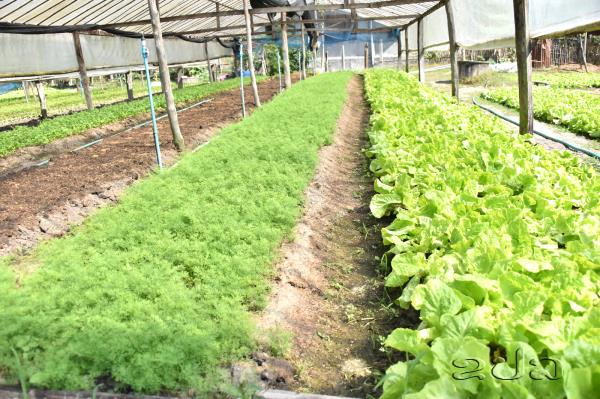KPL
Vientiane authorities have stepped up efforts to promote integrated, clean, and smart agriculture as part of ongoing reforms in the city’s agricultural and forestry sectors.

The approach has focused on establishing new business units, production groups, and cooperatives, while encouraging districts to consolidate and strengthen existing groups so that they can serve as the foundation for future cooperatives.
Over the past five years, in line with the 9th Five-Year Socio-Economic Development Plan (2021–2025) and the orientation of the 10th Plan (2026–2030), Vientiane has expanded integrated clean agricultural production to 127 groups. Authorities have also promoted smart agriculture through the construction of 1,137 greenhouses for systematic vegetable cultivation and supported the growth of 46 clean and organic vegetable production groups.
Rice production during this period reached 1,455,734 tons, which was equivalent to 91 percent of the target set in the plan. Annual vegetable production reached 595,070 tons, slightly exceeding the plan by 0.3 percent. Fruit production reached 481,780 tons, surpassing the target by 26 percent, while meat supply stood at 358,074 tons, or 97 percent of the target.
To support agricultural productivity, ten biological powder production facilities and several model groups for organic fertilizer were promoted and monitored, producing a combined total of 43,710 tons of fertilizer. Five animal feed production facilities also contributed an annual output of 324,500 tons. These efforts helped ensure sufficient domestic food supply. On average, each person in Vientiane consumed 277 kilograms of rice, 114 kilograms of vegetables, 93 kilograms of fruit, and 68.5 kilograms of meat, fish, and eggs per year.
Authorities also promoted crops such as sweet potatoes, fruit, and rice to supply raw materials for domestic processing industries and for export. The total output of these crops reached 2.16 million tons, generating more than one billion US dollars in export value.
Looking ahead, Vientiane Capital has projected an average economic growth rate of eight percent per year from 2026 to 2030. By 2030, total GDP is expected to reach 153,292.02 billion kip, while GDP per capita is projected to reach 134.24 million kip. The agricultural sector is expected to account for 11.5 percent of GDP, with planned outputs of 1,239,758 tons of rice, 560,430 tons of vegetables, and 76,241 tons of fruit. Livestock production is expected to expand by three to four percent annually.
KPL